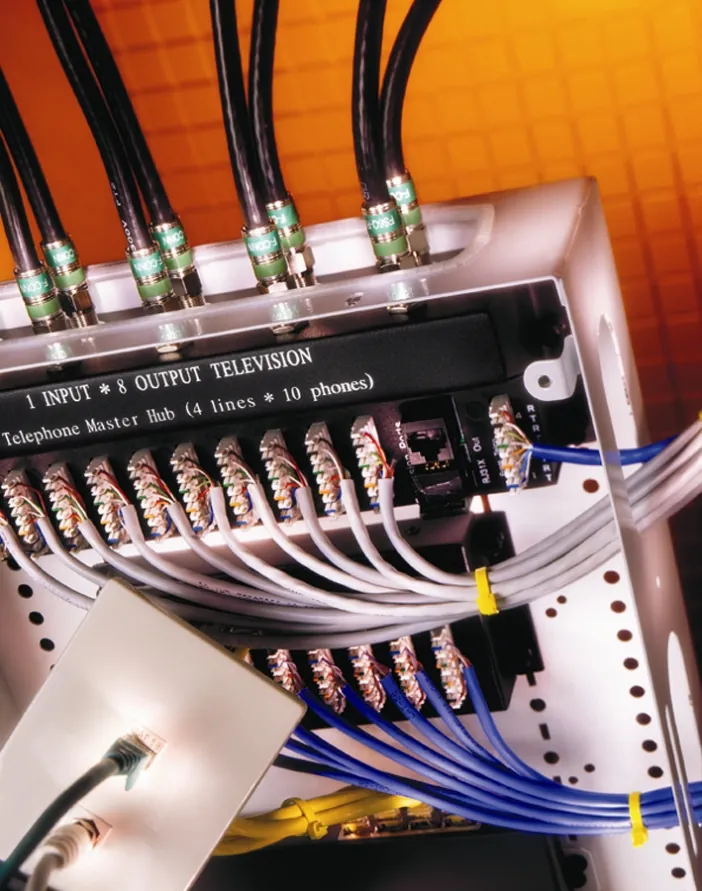Smart home technology is one of today's more popular trends in designing dream homes.
Homeowners everywhere are looking for the next technological gadgets that will make their homes luxurious and cutting edge. However, it is important to know your home can support it. Structured wiring is rapidly becoming the standard in
new home construction, keeping homes ready for the next great technology.

You may be thinking to yourself, what's the big deal? Everything I need works fine with a few routers, hubs, switches, and extension cords! However, what if your gadgets worked efficiently without all those extra devices and extensions? This is what structured wiring is – an arrangement that combines all your communication devices into one user-friendly system. To better understand the impact structured wiring can have, you should first be familiar with the older standard of home wiring.
The Daisy Chain Method
With the older daisy chain method, wires run through the house from one outlet to another and another, etc. There are many separate outlets that often require cable splitters in multiple locations simply to get enough wires running where needed. Every time a cable splitter is used the signal strength is compromised, creating a severe decline in quality sound and picture.
If one connection fails those daisy-chained to it will also fail. In the construction of older homes, little attention was paid to how these wires were run, resulting in limited documentation of where various cords lay. This has made repairs and troubleshooting extremely difficult, if not impossible.
New Structured Wiring

Structured wiring is when a control panel is placed in a central location, like a utility closet or attic, and all the cables run together from this location to the outlets. In each room, the outlet plate has all the jacks for the cable bundle running from the panel, keeping everything together. Wires are not spliced with structured wiring, ensuring quality audio and video.
Advantages of structured wiring are numerous, including the ability to easily reroute signals. This allows a homeowner to pump video or audio from one room throughout the house to other devices. A movie playing in the recreation room can be routed to watch simultaneously in the kitchen. Another benefit is basic trouble-shooting. Individual cables can be separated from the bundle in order to control, maintain, and upgrade throughout the years.
It is important to plan ahead when installing structured wiring. Plot out where exactly you want these outlets to be in each important room. Additionally, look to the future and plan a few extra ports for that technology that has yet to be discovered. Running some spare cable through open walls may be a slight additional building cost, but will be much more efficient and economical than retrofitting in years to come.
The average structured wiring set-up typically adds $750-$2,000 to the cost of building your home. (Prices are decreasing as demand increases.) It is important to decide just how much structured wiring is needed based on the sophistication of the system. Some ideas for structured wire homes:
- Home offices that function like company offices
- Specialized control over thermostats and lighting
- Multiple-viewing video feeds
- Security and child monitoring
- Whole home audio
- The latest in Smart Home technology
- Remote dial-in for control when away from home
It is out with the old and in with the new, as structured wiring offers more amenities to homeowners. Keep in mind, the more advanced the system, the more likely a professional will need to be contacted. Some do-it-yourself kits are available for smaller jobs, however, be aware of local building codes before taking on any installation endeavor.
Here are some related articles:
Save this article to:
back to top